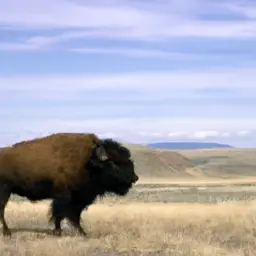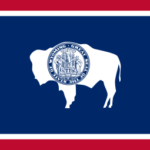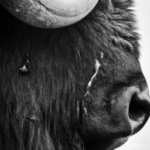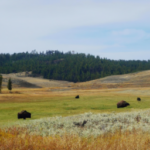Are you curious about what led to the decline of the American Bison? Let us explore the factors that contributed to the alarming decrease in the bison population. From the historical events that took place to human influences, we will uncover the intricate web of circumstances that led to this decline.
Historical background of American Bison
The role of Bison in Native American culture
The American Bison, also known as the buffalo, played a vital role in the culture and livelihood of Native American tribes for centuries. To these tribes, the bison represented more than just a source of food and material goods. They considered it a sacred animal, symbolizing strength, abundance, and a deep connection to the land.
Throughout history, Native American tribes relied on the bison for survival. They used every part of the animal, wasting nothing. The hides provided shelter and clothing, while the bones and sinew were transformed into tools, weapons, and utensils. The meat served as a staple in their diet, while the horns and hooves were utilized for ceremonial purposes.
Bison were not merely a resource for these tribes; they were an integral part of their spiritual and cultural identity. The relationship between Native Americans and the bison was one of respect and harmony, as they recognized the importance of maintaining a balance in their interaction with this magnificent creature.
Bison as a key species in North America’s ecosystems
The American Bison played a crucial role in shaping the North American ecosystems prior to the arrival of Europeans. Their grazing behaviors helped to maintain the balance of grasslands and their nutrient cycling enriched the soil. In doing so, they contributed to the diversity and stability of the prairie ecosystems.
Bison grazing actively influenced the composition and structure of plant communities, promoting the growth of diverse grasses and herbaceous plants. These plants, in turn, supported a wide range of insects, small mammals, birds, and other wildlife species. The bison’s activities also played a role in creating and maintaining habitats for various species, including burrowing animals that utilized the bison-created wallows.
The ecological impact of bison extended far beyond their immediate habitat. Their movements across vast distances facilitated seed dispersal, allowing for the expansion of plant communities. Their presence even influenced water availability, as their trampling actions aided in the absorption of rainfall and decreased surface runoff.
Pre-European Bison population estimates
Estimating the historical bison population in North America before European settlement is a challenging task. However, experts believe that the numbers were vast, with estimates ranging from 30 to 60 million individuals. These immense herds roamed freely across the plains, shaping the landscape and sustaining the Native American tribes that depended on them.
The bison population distribution was not uniform, as they preferred specific habitats with adequate grazing resources and access to water. The herds would move and migrate in response to seasonal changes, following the availability of forage and water. This mobility allowed the bison to thrive and adapt to various environmental conditions.
Despite the difficulty in accurately quantifying their numbers, there is no doubt that the bison population was immense and played a fundamental role in shaping the North American continent. Unfortunately, this remarkable species would soon face significant challenges and undergo a rapid decline due to European colonization and subsequent human activities.
Early Effects of European Colonization
Introduction of new diseases from Europe
The arrival of European settlers to North America brought more than just a clash of cultures; it introduced new diseases that had devastating effects on the bison population. The bison had no natural immunity to these diseases, making them extremely susceptible to illness and death.
One of the most notorious diseases introduced by Europeans was bovine tuberculosis. As European livestock intermingled with the bison herds, the transmission of this disease became inevitable. It led to widespread mortality within the bison population, causing a decline in numbers.
Additionally, diseases such as brucellosis and anthrax also wreaked havoc on the bison population, leading to further decimation. The impact of these diseases combined with other factors posed a significant threat that contributed to the decline of the bison population in North America.
Altered land use patterns and Bison habitats
European colonization of North America brought about profound changes in land use patterns, which had detrimental effects on bison habitats. The expansion of agricultural activities, the establishment of settlements, and the construction of infrastructure resulted in the fragmentation and loss of vast grasslands, which were crucial to the bison’s survival.
As settlers cleared land for agriculture and fenced off properties, bison were confined to increasingly smaller areas. They could no longer roam freely across their traditional ranges, leading to resource competition, reduced foraging opportunities, and a loss of genetic diversity. These changes in land use patterns ultimately disrupted the ecological balance upon which the bison relied.
Initial hunting impact from settlers
The arrival of European settlers also brought with it a relentless hunting pressure on the bison. Settlers saw bison as a valuable commodity, with their hides and meat in high demand. Bison were hunted indiscriminately, often for their hides, which were used to supply the growing fur trade.
The introduction of firearms further intensified hunting efforts, as larger numbers of bison could be killed more efficiently. European settlers slaughtered bison in staggering numbers, often in wasteful and unsustainable ways. This uncontrolled hunting, coupled with other emerging factors, would eventually lead to the decimation of the bison population in North America.
Manifest Destiny and the Westward Expansion
Impact of the Gold Rush
The mid-19th century brought about significant changes in North America, primarily driven by the pursuit of wealth during the California Gold Rush. As fortune-seekers flocked to the West, they disrupted the bison’s natural habitat and migration patterns.
The Gold Rush resulted in an increased demand for resources and infrastructure to support the growing population. The construction of roads, railroads, and settlements led to the fragmentation and destruction of bison habitats. The bison herds faced significant barriers that impeded their traditional migration routes, denying them access to critical resources and areas for breeding.
Furthermore, the increased presence of settlers introduced additional hunting pressures on the bison, as countless individuals sought to profit from the trade of bison hides and meat. The combined impacts of resource exploitation and unregulated hunting further threatened the already vulnerable bison population, pushing them closer to the brink of extinction.
Railroad construction and Bison habitats
The construction of railroads across the North American continent during the Westward Expansion had profound consequences for the bison and their habitats. The railroads facilitated the transportation of settlers, goods, and resources across vast distances, dramatically altering the landscape and infringing upon bison territory.
Railroad construction required the clearing of vast stretches of land, which disrupted migration patterns and fragmented bison habitats. In addition, the presence of railroads created physical barriers that interfered with the natural movements of the bison herds, leading to isolation and increased population vulnerability.
Furthermore, the railroads provided easy access for hunters and commercial traders, enabling them to exploit bison populations more efficiently. The rail transportation system facilitated the rapid shipment of buffalo hides, allowing for an even greater commercial demand and further accelerating the bison population decline.
Bison slaughter for hide and meat trade
The bison’s slaughter for the hide and meat trade reached unprecedented levels during the Manifest Destiny era. The rapidly increasing demand for bison products, driven by the expanding fur trade and the needs of an expanding population, placed immense pressure on the surviving bison herds.
Hunters, both professional and amateur, flocked to the Great Plains to profit from the bison slaughter. They engaged in a systematic and wasteful eradication of the species, often taking only the hides or tongues and leaving the rest of the carcasses to rot on the prairies.
This brutal and unsustainable hunting effectively wiped out entire bison herds and devastated the remaining populations.
The relentless pursuit of profit, combined with the destruction of habitats and the disruption of migration patterns, pushed the American bison to the brink of extinction. By the late 19th century, the once teeming herds that had shaped the North American landscape were reduced to a mere fraction of their former numbers.
Did the Decline in American Bison Population Contribute to the Evolution of their Humps?
Did the decline in American bison population contribute to the evolution of their humps? This question arises due to the mystery of why bison have humps. The hump of a bison primarily consists of muscle and fat, allowing it to store energy and survive in harsh conditions. While population decline may not directly impact hump development, environmental pressures and survival mechanisms could have influenced this evolutionary adaptation.
Systematic Eradication Policy
Military strategy to displace Native Americans
The systematic eradication of the American bison was not only driven by commercial interests but also by deliberate military strategies. The United States government had adopted a policy to displace Native American tribes from their ancestral lands, and the extermination of the buffalo played a significant role in achieving this objective.
The strategic rationale behind targeting the bison was rooted in the understanding that Native American tribes depended heavily on these animals for their subsistence and cultural practices. By eradicating the bison herds, the government aimed to undermine the tribes’ ability to sustain themselves and deprive them of their way of life.











